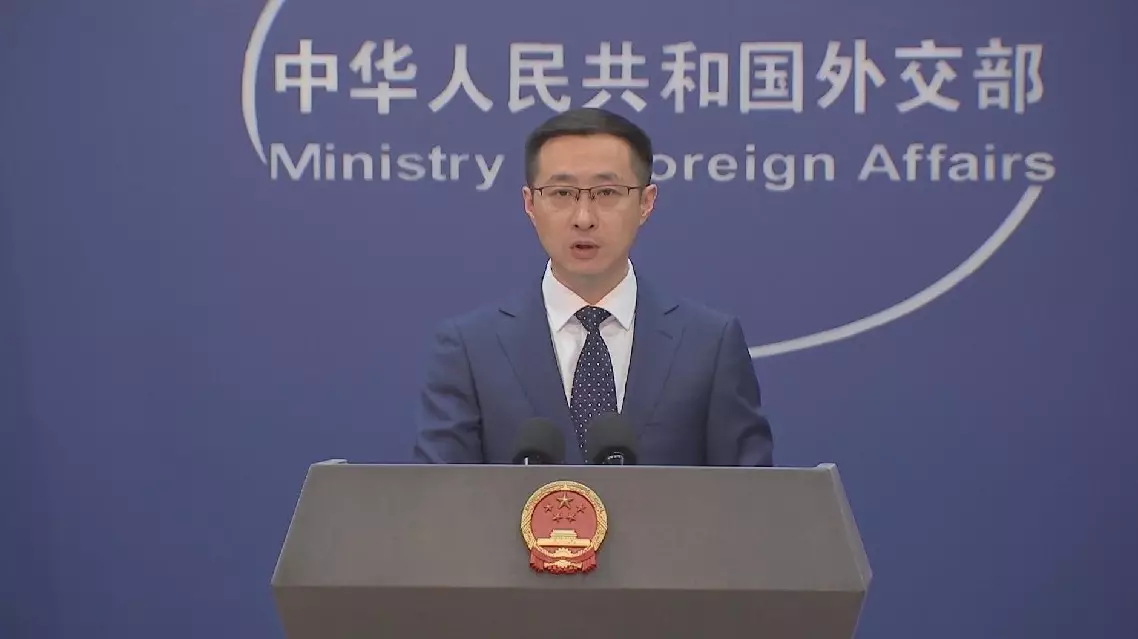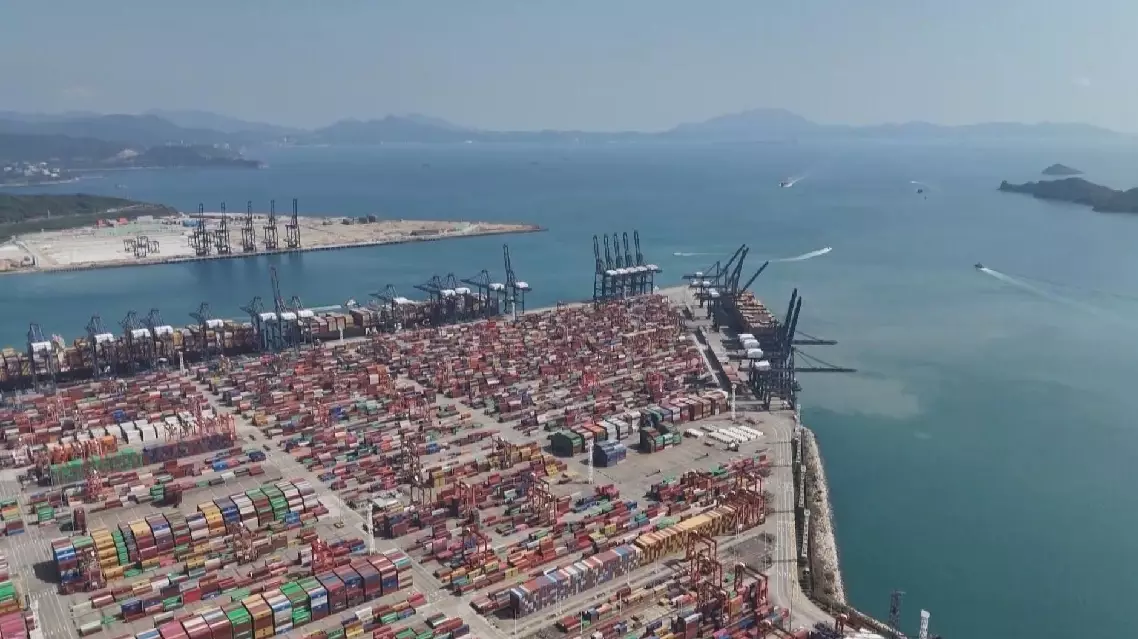World heritage sites are mankind's common wealth making it mankind's shared responsibility to protect and preserve them, Chinese Foreign Ministry Spokesman Lin Jian said on Monday.
At the 46th session of the UNESCO World Heritage Committee, the Beijing Central Axis, the Badain Jaran Desert’s Towers of Sand and Lakes, and the migratory bird sanctuaries along the coast of the Yellow Sea and the Bohai Gulf of China (Phase II) all passed the review process to be included on the UNESCO World Heritage List.
Lin extended the ministry’s congratulations to the successful applications for world heritage status for these three sites.
"We would like to extend our warmest congratulations on the successful application for World Heritage to 'Beijing Central Axis: A Building Ensemble Exhibiting the Ideal Order of the Chinese Capital', 'Badain Jaran Desert - Towers of Sand and Lakes', and 'Migratory Bird Sanctuaries along the Coast of Yellow Sea-Bohai Gulf of China (Phase II)'. The total number of World Heritage sites in China has risen to 59, ranking second in the world. Among those, there are 15 World Natural Heritages and four World Cultural and Natural Heritages, with the number of World Natural Heritage being the highest worldwide," said Lin.
He underlined the efforts that China has put in to protecting and preserving cultural and natural heritage for future generations.
"The successful application for World Heritage is attributed to the unremitting efforts of the Chinese government and people in protecting and preserving cultural heritages, preserving ecological environments, and building a beautiful China. The Chinese government has carried out more than 100 cultural relic protection projects to revitalize the Beijing Central Axis, the longest urban axis in the world, and to integrate the hustle and bustle of the old city with a modern lifestyle. Adhering to the principle that 'lucid waters and lush mountains are invaluable assets', we have stepped up efforts to protect ecological diversity and improve environmental governance, so that the geological and geomorphologic features of the Badain Jaran Desert - Towers of Sand and Lakes have been conserved, and the habitats of migratory birds along the Yellow Sea-Bohai Gulf can provide indispensable breeding, resting and wintering grounds for tens of millions of migrating water birds," Lin noted.
He emphasized that protecting and preserving world heritages is a responsibility shared by all.
"World Heritage is a common wealth of mankind, and protecting and passing on world heritage is a shared responsibility of mankind. China will continue to uphold the vision of a community with a shared future for mankind, work with the international community to actively implement the Convention Concerning the Protection of the World Cultural and Natural Heritage, share China's successful experience, strengthen cooperation on World Heritage protection, and continue to contribute Chinese wisdom and strength in global ecological conservation, as well as exchanges and mutual learning among civilizations," Lin said.

Mankind’s common responsibility to protect world heritage sites: Chinese spokesman
Many Chinese logistics companies are ramping up their shipments for the U.S. market following the latest round of mutual tariff adjustments between China and the United States.
China and the United States announced in Geneva on Monday a series of tariff modification measures aimed at easing trade tensions between the world's two largest economies.
The decision followed a two-day China-U.S. high-level meeting on economic and trade affairs, where both sides recognized the importance of their bilateral economic and trade relationship to both countries and the global economy, a joint statement said, noting that both sides emphasized the need for a sustainable, long-term and mutually beneficial economic and trade relationship.
The latest measures have driven up the businesses of shipping companies in Shenzhen City, in south China's Guangdong Province.
In a freight forwarding company in Shenzhen, the manager said that U.S. clients are experiencing shortages of supplies and are pressuring them to expedite shipments on the next available vessels. The staff members are busy organizing export release documents, with stacks of paperwork for shipments to ports in Los Angeles, New York, and Chicago.
"Since the afternoon of May 12, our shipment volume has increased by 40 percent. By June, it should at least be doubled compared to now," said Fu Shengying, deputy general manager of Guangdong Branch of WorldEx Group.
Fuwei Community in Bao'an District, Shenzhen, is an important hub for cross-border e-commerce logistics. Recent data shows that the average daily export shipment volume here has increased by 14 percent over the past three days compared to May 11.
In another logistics company specializing in cross-border e-commerce, orders from U.S. clients have also surged. According to the company, these clients are facing low inventory and need to restock immediately. Over the past few days, the company has received more orders than during the same period in the previous years.
The company manager noted that the surge in order volume has led to increased demand for container ships. Consequently, some shipping companies are starting to adjust their capacity allocation on a global scale.
"Many shipowners had previously adjusted their capacity, but now that a large volume of cargo is suddenly coming in, there is a shortage of capacity. Consequently, freight rates are rising rapidly. Despite this, many clients are still very eager to ship their goods," said Luo Rong, general manager of Shenzhen Branch of Dewell Group.
Yantian Port in Shenzhen is the busiest shipping hub in South China for routes between China and the United States, handling over a quarter of the country's exports to the United States. To meet the surge in demand from U.S. clients, Yantian Port is now scheduling six daily sailings to the United States.
The port staff said that they have recently received inquiries from several shipping companies and are coordinating berth arrangements and schedules. They are prioritizing vessels for U.S. routes at Yantian Port.
Summer is the traditional Christmas ordering season in the United States, and due to previous export suspensions, American sellers' inventories have been declining and urgently need restocking. As a result, demand for Chinese goods is expected to keep rising in the near future.

Chinese logistics enterprises ramp up shipments after China-US tariff adjustment























































